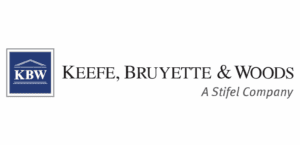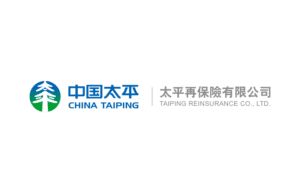With R&Q set for liquidation, what future for Gibson Re sidecar and its investors?

R&Q Insurance Holdings Ltd. has this morning confirmed that it is filing for a provisional liquidation in Bermuda, raising questions over the future of its collateralised legacy sidecar vehicle Gibson Re.
R&Q has been through the wars, both in terms of persistent historical reserve deterioration, a debt-load that has shackled the company, and some might call them corporate shenanigans over quite a few years, that have all diminished the stature of what was once considered a quality legacy insurance and reinsurance market player.
Having had a plan since late 2023 to sell the Accredited business, R&Q’s program management unit, to investor Onex Corporation for a while, Onex recently came back with an alternative proposal and now R&Q has been forced to take that.
The reason an alternative proposal was needed is due to R&Q’s diminished solvency, it appears, which has resulted in the destruction of legacy business value and required a rethink of the acquisition proposal.
Now, according to today’s announcement which our sister publication Reinsurance News covered, R&Q hopes to sell Accredited to Onex still, then put the rest of the business into liquidation in Bermuda and attempt to realise value in any way possible for the legacy side of the business.
All of which raises questions over the Gibson Re legacy reinsurance sidecar vehicle and whether its investors are set to experience any haircut to their allocations to the structure.
First, a quick mention of R&Q shareholders, who it seems may recover very little, if any value, from this entire process now.
R&Q’s share price on the London Stock Exchange was as high as £180.00 less than three years ago, but has fallen consistently to around £1.90 just prior to the announcement of the alternative proposal from Onex and then fell further in the wake of that and slid down to £0.08 when it was halted on the announcement of the impending liquidation.
As a result, R&Q’s share price graph over five years presents what can only be called one of the most stunning examples of shareholder value erosion seen in the global re/insurance market.
Back to the Gibson Re sidecar. There is a good deal of uncertainty now, over this and the rest of R&Q’s Legacy business holdings.
Any value recovered through the liquidation is expected to flow to the holders of debt first.
But as with any liquidation of a company that had already seen its value destroyed over the last few years, any sale of its constituent parts is likely to be a fire sale, with significant mark-downs needed to encourage buyers of legacy books, or of the entire operation as a going concern.
That doesn’t necessarily mean Gibson Re and its investors will face any loss of value.
Remember it is collateralised, so investor funds are held in trust and Gibson Re only took shares of R&Q legacy business underwritten after 2020, when it is the older legacy books that have suffered so much reserve deterioration, we understand. So the reserves held by Gibson Re may still prove profitable over time.
But, Gibson Re is still intrinsically linked to R&Q Legacy, as the sidecar structure has been taking 80% of R&Q legacy reserves, with the main company retaining the other 20%.
So, that uses quota share reinsurance arrangements between the main R&Q Legacy underwriting structure and Gibson Re, which means the reserves constitute part of the same legacy book of arrangements.
By late 2023, R&Q said that it had ceded 7 legacy transactions to Gibson Re, covering around $470 million of initial reserves.
The target had been to grow Gibson Re to cover $1 billion of reserves, with some of the initial investor capital still uncalled at that stage.
We understand since then, that R&Q has not been very successful in consummating new legacy deals, given the issues it has been facing, so it’s not clear how much in reserves Gibson Re holds right now, but it may not be much higher at this stage.
The vehicle had been delivering much-needed fee income for R&Q though, with some of that being fees paid by the investor it is assumed.
As we said, there is now a good deal of uncertainty over the future of Gibson Re, with many scenarios that could play out. From R&Q selling the entire Legacy business including the sidecar operation to an acquirer (likely at a distressed price), to a fire sale of legacy books, a transaction such as a loss portfolio transfer across all the legacy business, or even Gibson Re assuming the additional 20% in legacy reserves back and becoming a stand-alone entity supported by its investors (we feel the latter is the least likely).
Another possibility could be for the Gibson Re quota shares to be commuted and for R&Q to make the investors behind the sidecar whole and give them finality on the contracts, but given the pressures to recover value under a liquidators oversight, that doesn’t feel all that likely at this stage.
In every case, where an as yet unknown third-party might acquire or provide reinsurance across business held by R&Q Legacy and Gibson Re, it seems likely the terms would be onerous and price paid low, which again suggests some uncertainty over how much the investors would recover from this situation.
The one thing going in Gibson Re sidecar investor’s favour, is the fact this is a distinct legal structure, with a collateral trust behind it, so there will be plenty of terms and conditions around the money backing the sidecar, defining how it can be used, moved, or depleted in any way. So the investors should be as well-protected as in any other ILS structure, it seems.
It should be noted that there is no way to predict how this will play out, for R&Q or for the sidecar investors. But uncertainty has risen, with this mornings liquidation announcement and even that is dependent on the Onex proposed alternative deal for Accredited going ahead.
It’s understood pension Ontario Teachers’ was an original backer of the Gibson Re legacy sidecar. It’s not clear what other investors might also have exposure to the structure.





